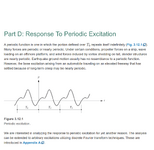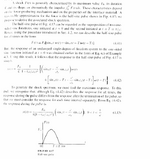canwesteng
Structural
Does anyone know what the forcing function of a repeated impact is? In this case, rocks falling at the same frequency over and over. Due to the machinery, the impacts will happen at the same frequency, though the force could vary. As a worst case I have modelled it as a sine function right now, but this now has a negative force component that will lift up on the structure, which won't happen in reality.


